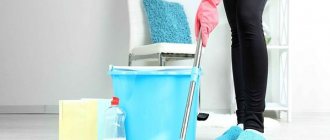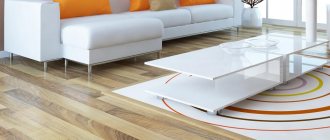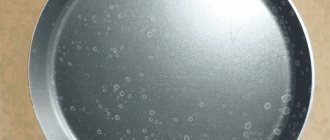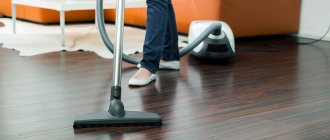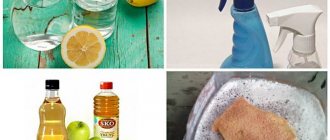When carrying out construction and repair work, it is necessary to prime the surfaces being treated. In this way, in addition to leveling, better adhesion of the laid material is ensured. It happens that drops of soil fall on the tiled floor. If you don't wipe them off right away, they stick tightly to it, leaving stains that are difficult to remove. Upon completion of the work, measures must be taken to wash the primer from the tiles on the floor. Knowledge of the means and methods helps to do this without harm to the coating.
Why is primer difficult to remove?
I use primer to fill voids and uneven areas. Among its features is that after it dries completely, it becomes insoluble and resistant to many physical and chemical influences.
For this reason, when working with primer, it is recommended to cover with something all surfaces that may receive splashes or excess mixture. Newspapers, masking tape, cellophane, etc. are suitable for this.
What is primer and what is it used for?
Treating surfaces with a primer is considered preparatory work before final finishing. It is a highly viscous solution that forms a thin layer on the material, which is used to increase the adhesion of coatings. It contains various high quality components with film-forming properties. Modern primer is characterized by reliability, high manufacturability and a wide range on the construction market. For metal surfaces, among other things, the solution prevents corrosion and has water-repellent and antiseptic properties.
Methods for cleaning tiles from primer
If the primer gets splashed on the tiles, it is necessary to wash them off as quickly as possible with a soap solution.
If the soil has hardened, you should first try to remove it as follows:
- Dissolve stains on the tiles with a small amount of soil mixture;
- After the primer has dissolved, remove it with a dry cloth;
- Wipe the remaining stain with a damp cloth and then cover with a wet cloth;
- After a couple of hours, remove the cloth and wipe the surface with a damp cloth.
In addition to the proposed method, there are other, no less effective methods.
Additional options
When solving the problem of “how to wash off the primer” remaining on tiles with an acid-resistant glaze, you can use household acid products designed for cleaning plumbing fixtures.
You can also achieve good results with the help of the well-known “Mr. Muscle”, traditionally used in situations where you need to clean windows. With its help, you can really solve the problem with other surfaces.
However, with a rough surface, you cannot do without a hard sponge. The product is suitable for treating glazed tiles.
Traces, including those on linoleum patterns, can be thoroughly wiped off with a cloth dampened in combination with a large amount of baking soda.
Essence, concentrated vinegar, is a product that can be successfully used after one to two weeks. It allows you to clean the glass of plastic windows and window sills, toilets and washbasins.
However, the product is considered quite dangerous: it does not threaten the skin of the hands, but can cause significant damage to the lungs, causing burns to these organs. To avoid health problems, you must wear a gas mask.
An alternative to this protective equipment is a paint mask with good filters. Workwear is also highly recommended.
In some situations, it may be possible to limit yourself to a household steam cleaner.
Mechanical cleaning method
To mechanically remove hardened soil from the surface of the tile, you need to purchase a special scraper with a sharp, replaceable blade from a hardware store.
Then you need to act in the following order:
- Moisten with soapy water and cover the contaminated area with a wet cloth. Leave to soak for at least 6 hours;
- Due to the possibility of damaging the tile surface, the scraper should be handled carefully. Movements should be slow and smooth;
- Sprinkle the remaining stain with baking soda and wipe with a damp sponge;
- After removing the stain, clean the tiles from soda.
This method is not suitable for tiles, which are more vulnerable to scratches.
How to quickly clean
The best way to quickly remove primer is to clean the surface immediately after stains appear. It is not recommended to use chemicals containing abrasive particles. Also, do not use aggressive acids so as not to spoil the surface. You can get a clean floor without stains or streaks by washing the surface of the tiles with a cloth soaked in a special solution. After cleaning, the surface of the tile is polished with felt or a brush.
Special acids for cleaning tiles
Substances created on the basis of inorganic acids. This method of removing soil is very effective, but can only be used to remove soil from the surface of tiles that are resistant to acids. Most types of tiles under the influence of such substances will lose their appearance and begin to collapse.
- When working with acids, it is important to use personal protective equipment. The room must be well ventilated due to the risk of vapors released by the substance entering the respiratory system. It is necessary to use goggles, a respirator and rubber gloves.
- Before carrying out work, the substance must be diluted with water. Depending on the type of substance, the proportions may differ. Typically, the manufacturer indicates the optimal proportions for mixing the substance with water on the product packaging.
After diluting the solution, it is applied to the hardened soil. During action, the liquid may hiss and bubble, this indicates that the acid is successfully coping with its tasks.
After a certain period of time, the hissing stops, which indicates that the dissolved soil can be washed off. Residues should be cleaned with a baking soda solution.
In some cases, a solution of citric acid will help remove frozen soil. The stain is treated with a sponge soaked in this solution. This method is safer, but may be less effective.
How not to damage tiles during renovation
Protecting your flooring is the best way to prevent contamination during renovation work. You can use plastic film, old wallpaper, newspapers. They cover the floor in the room being renovated. An additional piece of film is spread under the container with the prepared primer composition.
After finishing the work, the covering material, splashed with the mixture, is carefully rolled up and taken out of the room. The container with the remaining solution is tightly closed with a lid.
Preventing the appearance of contaminants will eliminate the labor-intensive cleansing process. Will save time, nerves and money.
Solvents for cleaning tiles
For tiles that are vulnerable to substances that contain inorganic acids, it is possible to use organic solvents. This method is one of the most effective. Solvents are excellent at destroying soil within a few minutes.
To clean the tiles from the primer, you can use solvents such as:
- Petrol;
- Acetone;
- Turpentine;
- Toluene;
- Ethyl acetate;
- Solvent P-646.
To quickly and completely remove contamination, it is important to adhere to the following procedure:
- Moisten a cloth with the selected solvent and place it over the contaminated area;
- After a few minutes, the fabric can be removed;
- Remove the dissolved mixture with a sponge or cloth;
- After carrying out work, thoroughly wash the treated area with soapy water.
Possibility of resorting to proven means
A special paint remover is widely in demand to solve the problem, both in the case of processing linoleum and when working with surfaces of other types.
The best option: if there is no acid in the remover. You can also purchase one of the following solvents for this purpose:
- acetone;
- petrol;
- toluene;
- turpentine;
- ethyl acetate.
If it was not possible to completely cope with the problem, you need to perform a complete priming.
It is also acceptable to use:
- alkalis;
- acids;
- strong oxidizing agent.
The second of these options is acceptable for acid-resistant surfaces, including window glass. It is not recommended to use it when working with tiles.
A wider range of applications is characterized by a product such as alkali. The same applies to a strong oxidizing agent, which is allowed for cleaning tiles: the oxides present in its composition cause the absence of a negative effect.
Detergents
If none of the previous options for cleaning the tiles from the hardened primer should use strong detergents.
The product is selected taking into account the tile’s resistance to acids and its characteristics. An incorrectly selected substance can contribute to the destruction of the tile structure.
Eye and respiratory protection should be worn when removing primer stains. It is also necessary to use thick, rubber gloves and avoid contact of the substance with bare skin. The room in which the tiles are cleaned should be well ventilated.
The use of potent compounds
The need to use potent compounds arises when removing dried stains. Several chemical solutions have become popular in the market.
Veroclean
Veroclean is highly effective and produces minimal foam. Residues of raw materials can be removed through short-term exposure. Veroclean is only used on waterproof surfaces.
Powerflix
Powerflix, based on phosphoric acid, does not damage the coating and dissolves building material residues. When using the composition, it is important not to allow it to dry out. It is recommended to ventilate the room well during and after work.
Hodrupa
Low foaming Hodrupa cleaner is used on water- and alkali-resistant coatings. The product cleans raw material residues and does not lead to corrosive destruction
Atlas Zsop
Atlas Zsop is suitable for removing dried residues and dirt after repairs. The product can be used on the outside and inside of buildings. Due to the presence of inorganic acid, it is not recommended to use Atlas Zsop to clean primer marks on enamel and marble.
Dopomat
Dopomat fast-acting cleaner is designed for treating floor coverings. The product abundantly wets the surface and does not leave foam or streaks. Dopomat is suitable for cleaning after renovation and for everyday use.
Corvette
Corvette's highly alkaline solution penetrates into porous structures and removes residue from waterproof tile surfaces. After treatment, mechanical cleaning of contaminants is required.
Mister Muscle
Mister Muscle contains organic solvents that effectively remove traces of raw materials. The product can be used on almost any type of surface.
Sponges
Some types of tiles can be cleaned using special, hard sponges. They are made from special materials that can cope with hardened soil and not damage the tiles.
When working with a hard sponge, it is important to adhere to the following rules:
- Use gloves;
- Wet the sponge with cold water. Do not squeeze water onto contamination;
- Do not use chlorine-containing substances.
Folk remedies for removing primer from floor tiles
You can clean tiles from primers using materials available on the farm.
Baking soda
Baking soda is good at removing primer from tiles.
A softening composition is prepared from it. The powder is diluted with water to form a liquid porridge. It is applied to pre-moistened primer spots. You need to wait 10–15 minutes for an effective action, not allowing the soda paste to dry out. Then the softened primer is wiped off with a hard sponge.
But still it is a slow-acting and weak remedy. Baking soda can only deal with fresh stains. But it is convenient to use as a preparation for preliminary weakening of dried primer.
Before covering dirty spots with wet rags, it is useful to sprinkle them with baking soda powder. This will speed up the softening process and allow you to remove most of the dried material with a scraper.
Vinegar
To effectively clean the primer from tiles, you will need not a table solution of 9%, but vinegar essence containing up to 70% of this substance.
It is poured over dried stains and left to act for 15–20 minutes. It is convenient to moisten large contaminated areas with essence from a spray bottle. Then the primer is scraped off or rubbed off with brushes. The toughest areas will have to be treated several times.
After removing all contaminants, the tiled floor must be rinsed with plenty of water. It is useful to add a little soda - it neutralizes the acid.
When working with vinegar for a long time, you must use respirators. The essence is not particularly harmful to the skin, but its vapors can cause a burn to the lungs.
Polyurethane foam cleaner
The advantage of this method of cleaning tiles from primer is its versatility. This cleaner can be presented in the form of an aerosol or liquid.
In order to remove hardened soil, it is important to use a substance that has a special mark on its label. This means that the cleaner is able to remove the primer.
An aerosol is a more effective way to remove hardened primer. A small amount of aerosol is applied to the contaminated area and then removed with a sponge. The treated area is washed with water.
When working with primer, it is important not to let it come into contact with the tiles.
- It can be covered with paper, tape or cellophane.
- If excess or splashes of primer do get onto the tiles, wash the area with soap and water as quickly as possible.
- The dried mixture can only be removed using all the methods described above for removing primer from the surface of the tile.
Industrial cleaning products
When choosing products that can wash off dried primer, you need to pay attention to the resistance of the tile coating to aggressive substances. If it is not able to withstand acid treatment, it remains to use alkaline compounds or universal cleaners for different surfaces.
The instructions for use of primers often indicate the most suitable cleaning agents.
Of the household chemicals available on the market, the following are suitable for removing dried soil on tiles:
- Atlas Szop cleaner . This liquid is capable of washing away dried stains from soil, cement, paint and plaster. Contains organic acid.
- Cleaning products for plumbing fixtures and surfaces . Mr Muscle is considered the best.
- Paint removers . Most of them do not contain concentrated acids, so they can be used on all types of floor tiles.
- Cleaning agent for metals and glass “HodrupaA” . It can also be used to remove primer that has dried to the floor.
- Technical fluids – acetone, white spirit, turpentine.
If these remedies do not help, you have to use formulations based on concentrated acids and alkalis. Even deep penetration primers will be washed off under their influence. But you need to work with them with extreme caution. If handled improperly, these preparations will not only remove the dried layer, but also damage the tiled surface. In addition, they pose a health hazard.
After using any cleaner, it is necessary to rinse the treated surfaces with water. The evaporation of liquids remaining on the tiles will negatively affect the respiratory tract.
Photo of tile cleaning after repair
How to remove primer?
After the renovation is completed, the worst begins. Cleaning off primer is not an easy task. Tools are selected depending on the type of contaminated surface. The product should also be strong against dirty stains, but gentle on the items being treated. It should be taken into account that dried soil stains are more difficult to wipe off.
Features of the primer that make it difficult to wipe off
Used in preparing walls before the finishing layer. All primers, regardless of their purpose, consist of glue, resin and film-forming ingredients, bitumen, oils and pigments. Many mixtures also contain drying accelerators: after application they form a film that cannot be washed off with water or soap. The chemical reaction of the mixture occurs quickly, and if you do not wipe off the dirt within 20-30 minutes, it will be more difficult to do so later. You can prevent stains from occurring with a few tips.
Recommendations for working with solutions
- Cover all surfaces that are not to be primed with plastic film.
- Seal small places with masking tape.
- To protect your body and clothing, wear special uniforms and a face mask.
- Quickly wash off drops and stains of the solution even before it sets on the surface.
How to get rid of primer stains?
Glass removal
New stains can be easily washed off the window with water and a cloth.
It is possible to clean the glass without scratching the surface. Fresh soil stains can be removed with a regular damp sponge. If the dirt has already dried, then moisten it with the same product that left the stain. After waiting for minutes, you can clean the residue from the glass without any effort. Old stains are removed using a scraper. A mixture of baking soda and oatmeal (1:1) with water will help. Apply the resulting slurry to the stain and let it soak for an hour, then wipe it off with a rag. The most delicate window cleaning products are:
- "Mister Muscle"
- Hodrupa;
- Dopomat;
- Atlas SZOP is the most powerful of the line to remove primer.
Cleaning linoleum, parquet and laminate
Fresh traces of primer are washed off with a simple damp cloth. It is recommended to moisten old blots on the floor generously. After a few hours, the soil from the linoleum will be easy to remove with a dampened rag. If the stains cannot be removed, you need to use auxiliary products: White spirit, vinegar 9%, Silit or Sif (suitable for textured surfaces). Immediately moisten a piece of fabric with these substances and then rub the floor. These methods are not suitable for parquet and laminate flooring. The first way is to use window cleaning products. According to the second method, residues from parquet or laminate must be cleaned with a steam cleaner.
Cleaning tiles, porcelain tiles and plastic
Special preparations are used to clean ceramic cladding.
There are many options for removing primer from tiles. Solvents (White spirit, alcohol, acetone), special polyurethane foam cleaners, Powerfix with phosphoric acid and another Atlasszop acid product can also be used. Plumbing cleaners and vinegar essence are also suitable. The same products are used to clean porcelain tiles. Plastic can only be cleaned with solvents, in particular gasoline. But after removing the stain, you need to wash the surface with soapy water.
Wiping from clothes, hands
Large stains should be scraped off with a scraper, the item should be shaken out, and then soaked in a warm soapy solution for an hour and washed by hand. It is important to rinse the clothes as best as possible so that during subsequent washing in the automatic machine the unit does not clog. If there are stains left, you can try to remove the traces with gasoline, but a difficult odor will remain.
Fresh stains from the skin are washed off with hot water and soap. If it’s already ingrained, use vegetable oil, alcohol or paint thinner.
Soil cleaning products
- For glass - “Mr. Muscle”. A hard sponge and this product will clean the surface without scratching.
- For hard surfaces (tiles, porcelain tiles, plastic) - White spirit, gasoline or acetone.
- For those resistant to acid - Powerfix, Atlasszop.
- For all surfaces - vinegar and soda solutions.
It is important to understand that both the primer itself and the substances for wiping it off are very aggressive, so it is initially recommended to follow all safety rules: work in protective equipment (gloves, respirators), wear special clothing and shoes that you don’t mind ruining. It is equally important to immediately wipe off any remaining soil stains so that the composition does not have time to adhere to the surface.
How to prevent pollution
Since it can be quite difficult to clean tiles from primer or grout, it is better to take precautions and prevent contamination. To do this, all treated surfaces must be protected from drops of one of these mixtures. When caulking the seams, you can cover the tiles with masking tape. In the case of a primer, it is necessary to cover the floor and other surfaces in the risk zone with film. The joints are glued together with tape, since liquid can leak under them; the edges also need to be securely fixed.
Well, if it was not possible to avoid such a nuisance, there is nothing left to do but wipe the grout off the tiles. It is still better to be extremely careful with the primer. Do not delay cleaning, try to wipe the stain immediately after it appears; it is always easier to prevent a problem than to get rid of it later.
How to clean porcelain tiles
Porcelain tiles are a popular material for finishing floors and walls indoors. It is also used for outdoor work when arranging terraces, swimming pools, gazebos, etc. Moreover, the technology of laying the material and performing related construction operations involves the inevitable contact of various pollutants and aggressive substances on the surface of porcelain stoneware, the main of which are:
- adhesive solution;
- grout;
- putty;
- plaster;
- polyurethane foam;
- primer and paint;
- cement mortar;
- sealant, etc.
These and other materials are removed quite well from the surface of porcelain stoneware immediately after contact with it. This is done with a damp cloth before the stains harden. Otherwise, removing floor contaminants becomes much more difficult. At the same time, there are specialized products on sale that should be used in particularly difficult cases. However, most often, you can get by with inexpensive and simpler recommendations on how to clean porcelain tiles after repairs.
In any case, it is worth remembering that it is recommended to first check the aggressive cleaning substance to ensure its safety and effectiveness for porcelain tiles. This must be done in an area that is not noticeable, and only then treat the entire room.
A smooth, glossy surface is easiest to clean. For matte porcelain tiles or materials with shallow relief, there is a risk of deep penetration of building mixtures, which will significantly complicate their removal.
How to clean porcelain tiles from glue
Tile adhesive is a pre-diluted mixture, which, during the installation of porcelain tiles, is applied to the base surface, leveled and serves as a binding and leveling layer. One of the main characteristics of such a solution is increased adhesion to concrete and porcelain stoneware itself. That is why, after hardening, the glue is quite difficult to remove.
As a result, it is recommended to carefully wipe off any remaining adhesive solution that gets onto the surface of the porcelain stoneware during installation. Large stains can be easily removed with a spatula, while minor stains can be wiped off with a damp cloth.
If during installation it was not possible to completely clean the porcelain stoneware, the following sequence of operations must be carried out:
- softening the material - carried out using water, to which it is better to add ammonia or vinegar. If polymer glue was used during installation, the dirt should be carefully treated with acetone;
- Mechanical removal of adhesive residues is carried out using any convenient sharp object. A scraper, sandpaper, spatula, blade, or hard sponge can be used for this. In some cases, such as when using epoxy-based adhesives, it is recommended to use solvent-based cleaners suitable for the specific adhesive composition.
How to clean porcelain tiles from grout
Porcelain tiles are laid on the floor and walls, leaving seams between the individual tiles. This is due to the fact that even within the same batch, the dimensions of individual piece products may differ due to the characteristics of the material shrinkage during firing. Therefore, when laying, plastic crosses are installed between individual tiles, which allow the formation of identical seams between them. Later, the seams are filled with a special grout using a rubber spatula. As a result, some of the material inevitably remains on the surface of the porcelain stoneware and requires immediate removal. Wetting the porcelain stoneware before rubbing the joints will make it easier to wipe off the grout.
Even if the grout has begun to harden and become light in color, it can be removed with a hard sponge and a damp cloth. If enough time has passed and it is not possible to soak the stains, it is necessary to use any acid-containing powders or liquids. You can prepare them yourself or use ready-made household chemicals. Please note that on some types of flooring, for example, with a metallized surface, such treatment may leave light spots. When using epoxy grout, removing stains without special means is difficult and requires the use of a special epoxy solvent.
How to remove other pollutants from porcelain tiles
Lumps of putty, cement and other similar materials stuck to the floor can be quite effectively removed mechanically by scraping with a knife, plastic or metal spatula, or blade. Large pieces can be easily removed by hand.
Traces of primer and paint are more persistent and practically cannot be removed mechanically. It is better to clean them using solvents designed specifically for this type of paint. Oil and acrylic paints can be removed with White Spirit and other similar solvents, and water-based paints can be removed with a damp cloth. If the stain is quite old and cannot be wiped off, it is recommended to place a cloth soaked in solvent on top before removing the stain from porcelain tiles.
How to clean porcelain tiles
After the repair is completed, in any case, a final wet cleaning is carried out, the purpose of which is to remove various contaminants and dust. First of all, dusty materials are removed, if possible, using a vacuum cleaner.
If whitewash or other similar materials were used for finishing work, stains may remain on the floor and walls. In this case, the surface is washed generously with water, and then particularly dirty areas are wiped with a sponge soaked in detergent. At the final stage, the porcelain tiles are thoroughly washed.
For wet cleaning the following can be used:
- soap solution
- glass washing liquid;
- water with lemon;
- aqueous solution of vinegar.
08.03.2019 Is it possible to glue ceramic tiles to drywall?

